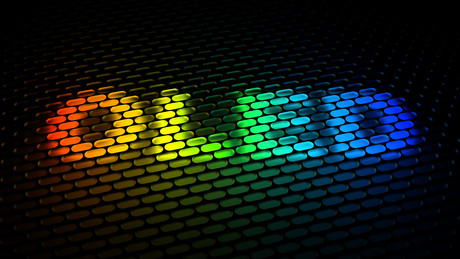Efficiency extended for lens-free OLEDs

Korean researchers have found a way to improve the efficiency of organic light-emitting diodes (OLEDs), yielding OLEDs with an external quantum efficiency (EQE) greater than 50% with an external scattering medium.
Having properties suitable for thin and flexible devices, OLEDs are popular light sources for displays, such as mobile devices and high-quality TVs. In recent years, numerous efforts have been made to apply OLEDs in lighting as well as light sources for vehicles — applications where high efficiency is of the upmost importance.
Thanks to continuous research and the development of OLEDs, their efficiency is steadily on the rise, and a level equivalent to inorganic LEDs has been demonstrated in some reports. However, these highly efficient OLEDs are often achieved with a macroscopic lens or complex internal nanostructures, undermining the key advantage of OLEDs as an affordable planar light source and hindering their stable operation, thus putting a limitation to their commercialisation.
Investigating various methods proven effective for OLED light extraction, a team led by Professor Seunghyup Yoo at the Korea Advanced Institute of Science and Technology (KAIST) focused on the external scattering-based approach, as it can maintain planar geometry and compatibility with flexibility. It is also able to be fabricated on a large scale at a low cost and causes no interference with electrical properties of OLEDs.
While research on enhancing OLED light extraction using light scattering has conventionally been conducted empirically in many cases, the team developed comprehensive and analytical methodology to theoretically predict structures that maximise efficiency. Considering OLEDs with the external scattering layers as a whole rather than two separate entities, the researchers combined the mathematical description of the scattering phenomena with the optical model for light emission within an OLED to rapidly predict the characteristics of many devices with various structures.
Based on this approach, the team theoretically predicted the optimal combination of scattering layers and OLED architectures that can lead to the maximum efficiency. Following this theoretical prediction, the team experimentally produced the optimal light-scattering film and incorporated it to OLEDs with orange emitters having a high degree of horizontal dipole orientation.
As a result, the team successfully realised OLEDs exhibiting EQE of 56% and power efficiency of 221 lm/W. Described in the journal Nature Communications, this is one of the highest efficiencies ever realised for an OLED unit device without the help of a macroscopic lens or internal light extraction structures.
“There are various technologies developed for improving OLED light extraction efficiency; nevertheless, most of them have not reached a level of practical use,” Professor Yoo said. “This research mainly provides a systematic way to attain an EQE of 50% or higher in OLEDs while keeping in mind the constraints for commercialisation. The approach shown here can readily be applied to lighting devices or sensors of wearable devices.”
3D semiconductor chip alignment boosts performance
Researchers have developed an ultra-precise method to align 3D semiconductor chips using lasers...
Researchers achieve 8 W output from optical parametric oscillator
Researchers have demonstrated a total output power of 8 W from a high-power mid-infrared cadmium...
"Dualtronic" chip for integrated electronics and photonics
Cornell researchers have developed a dual-sided chip known as a "dualtronic" chip that...






